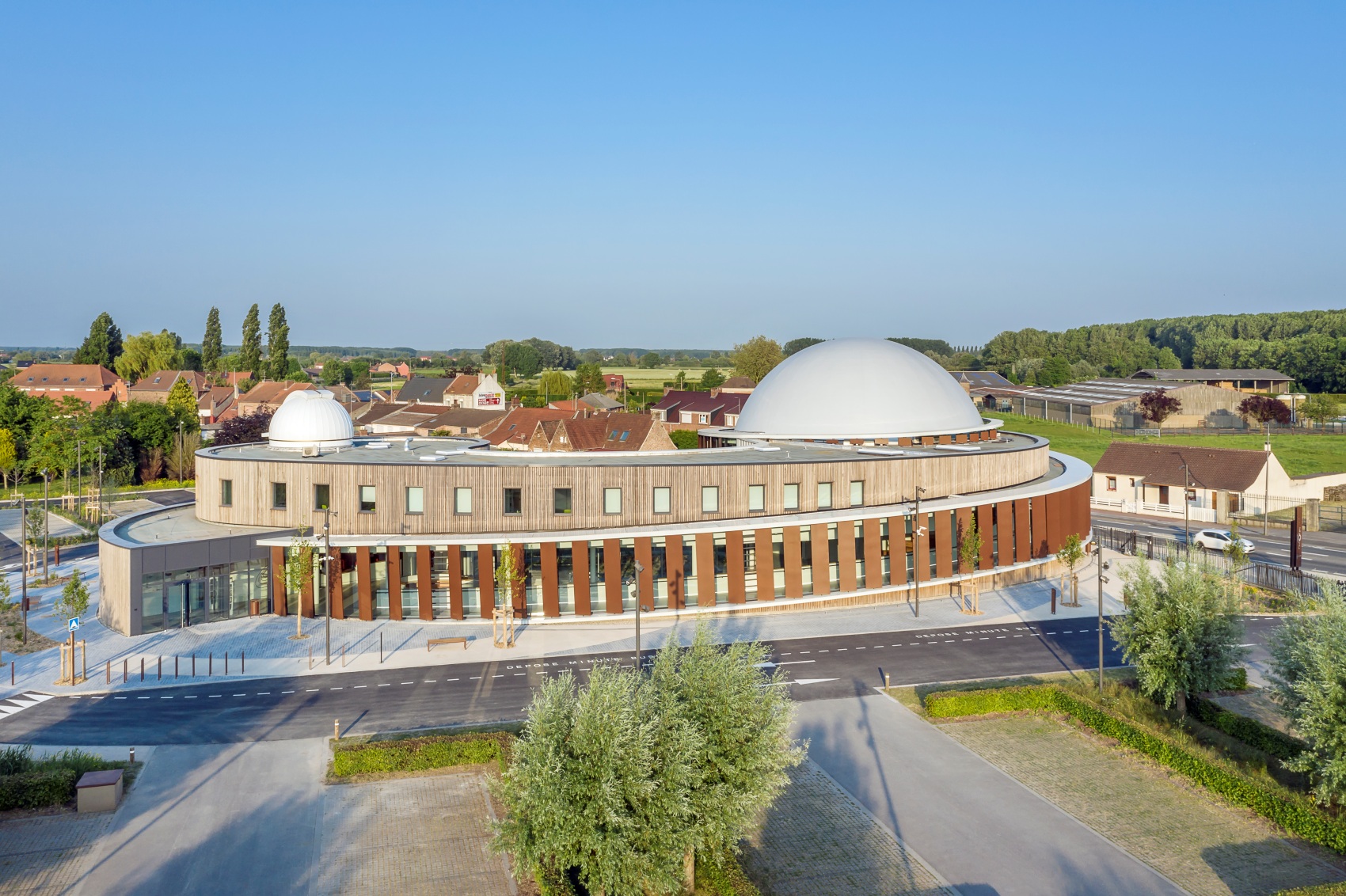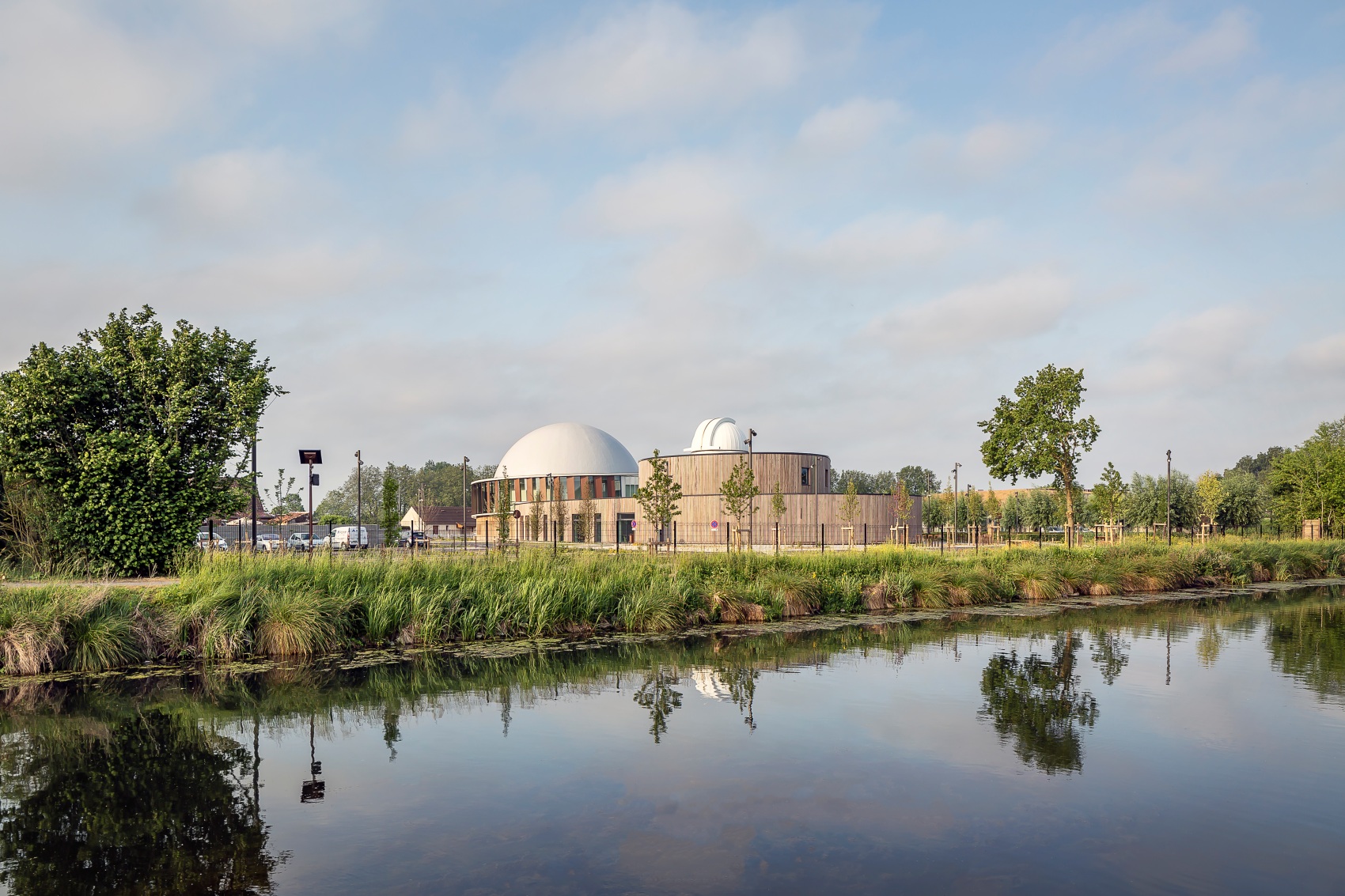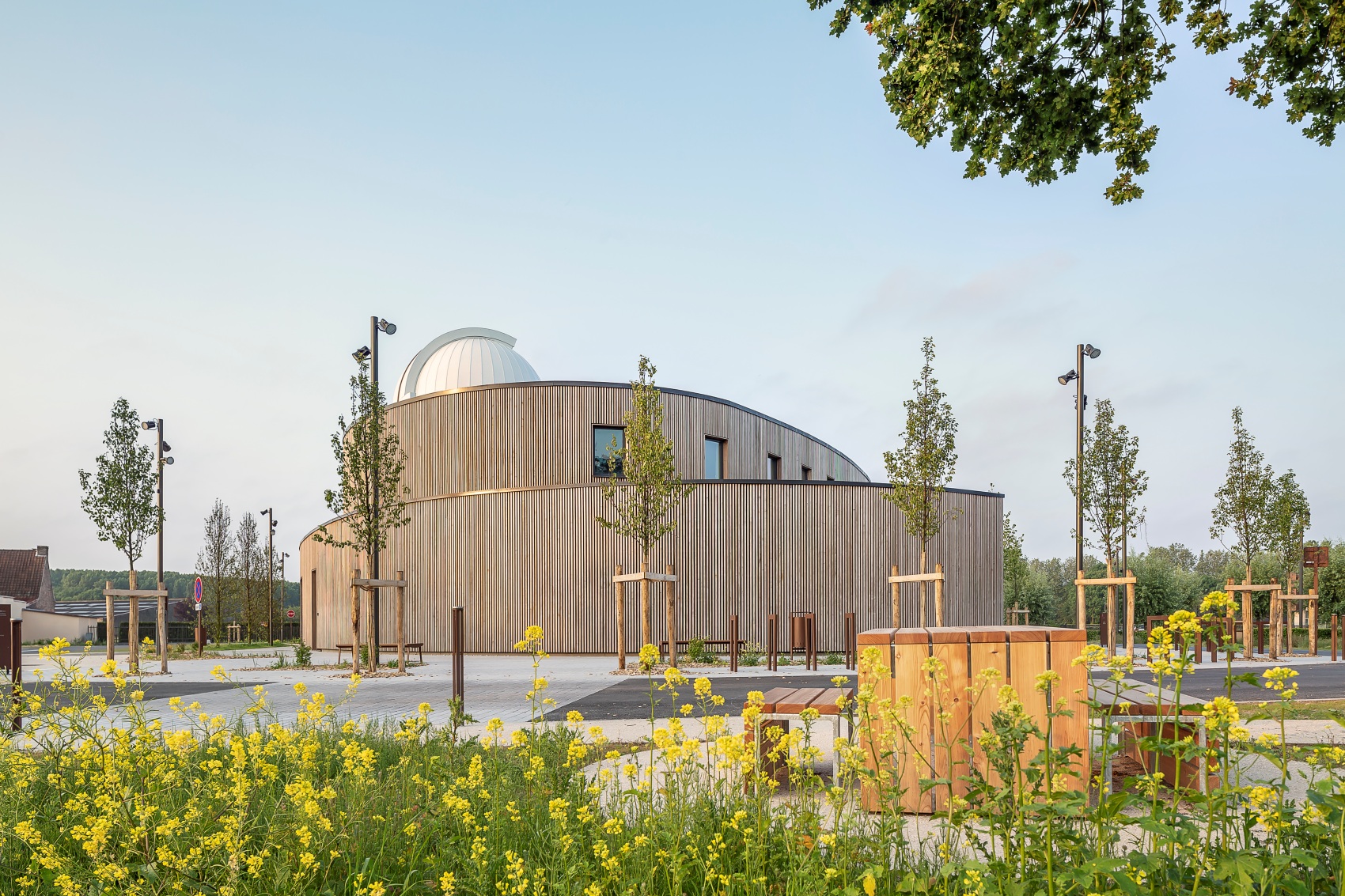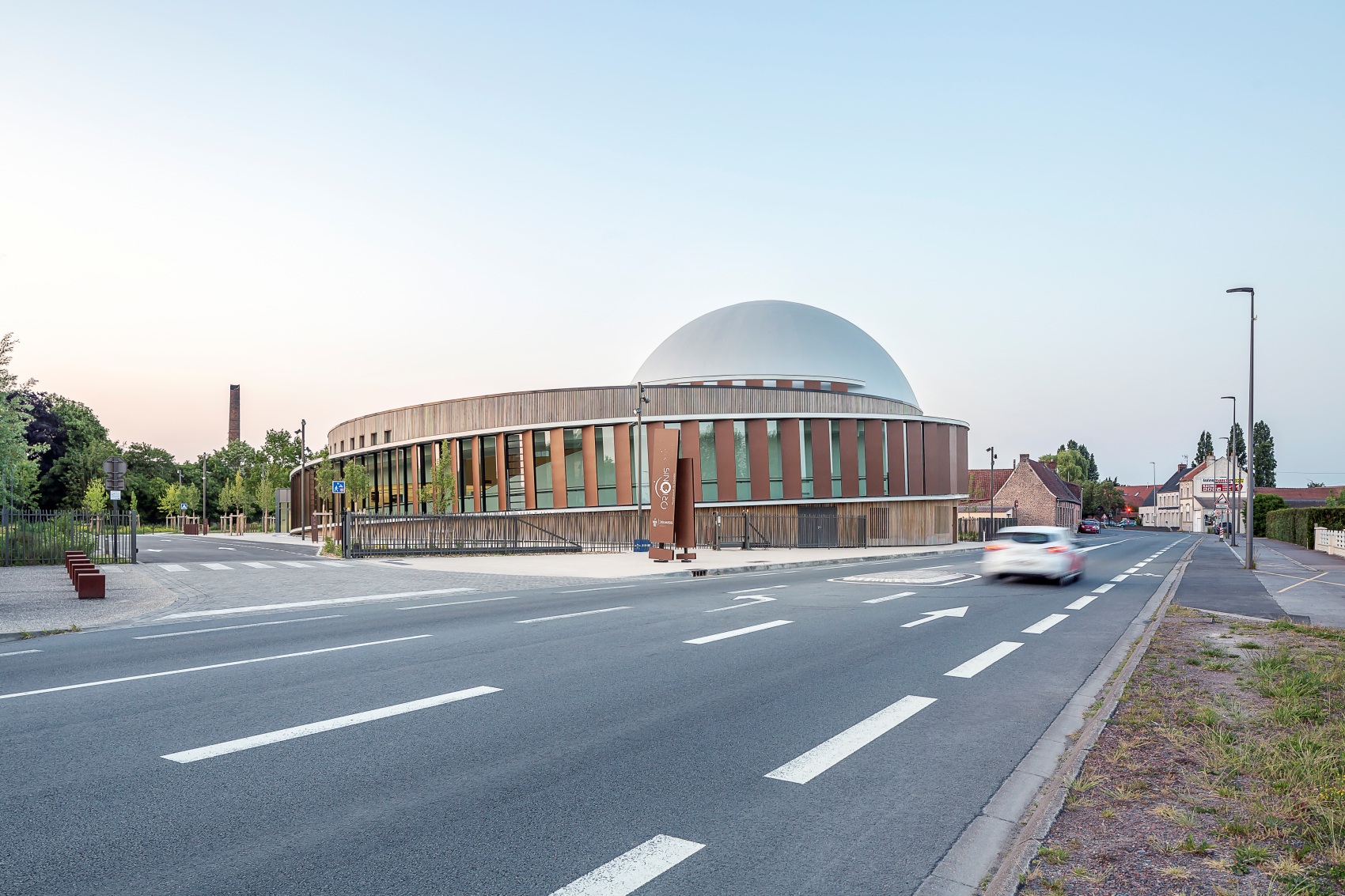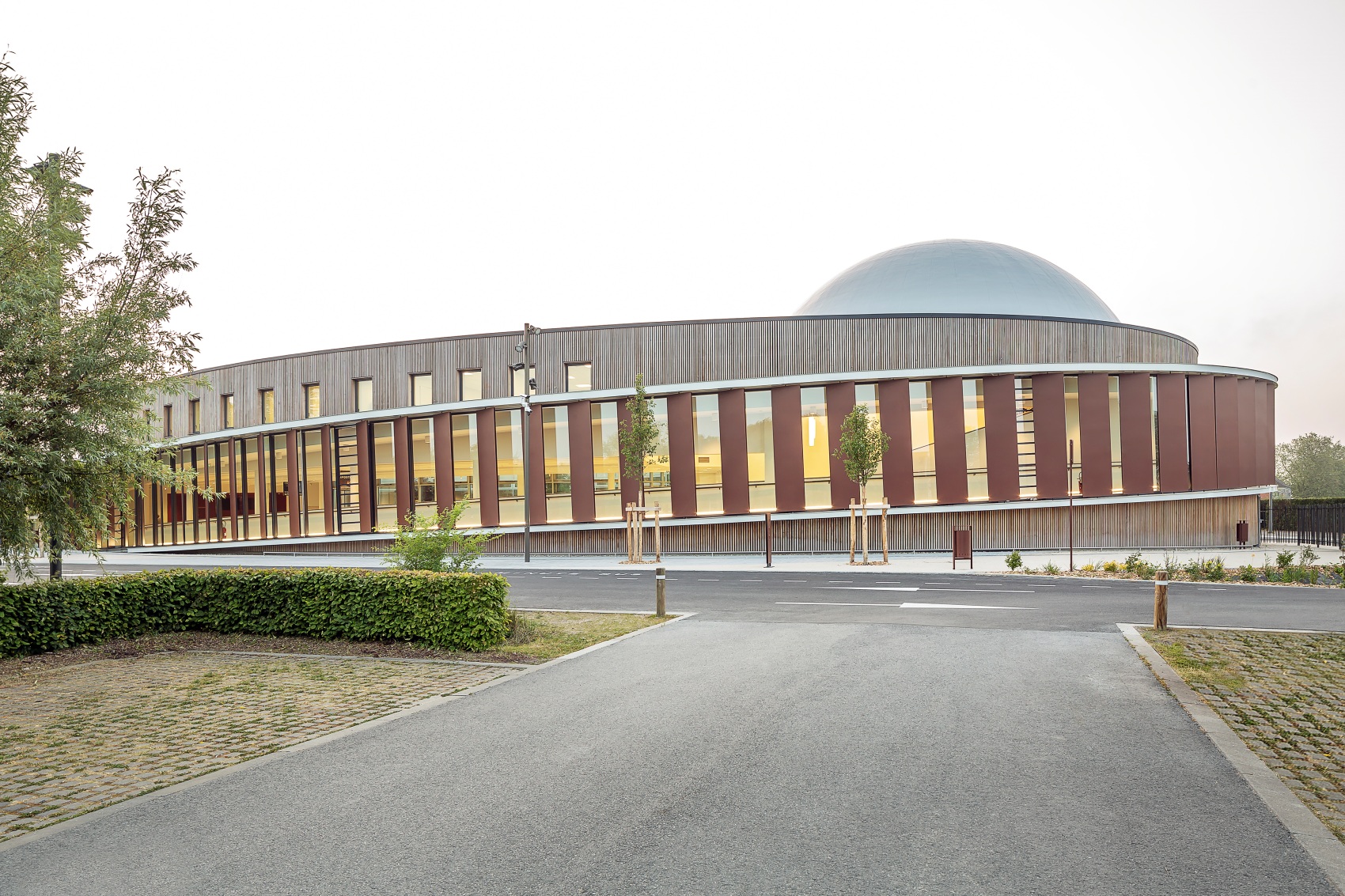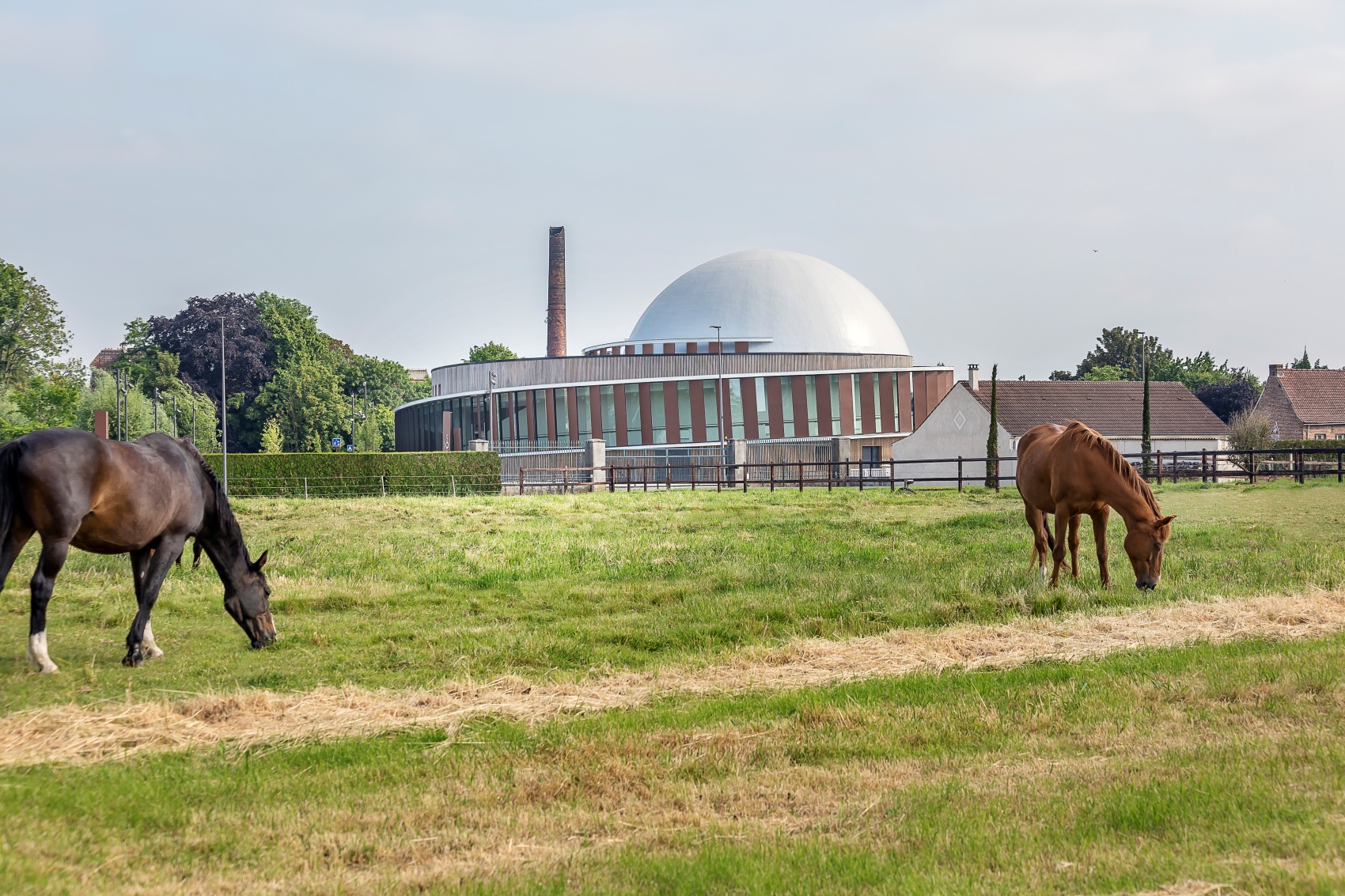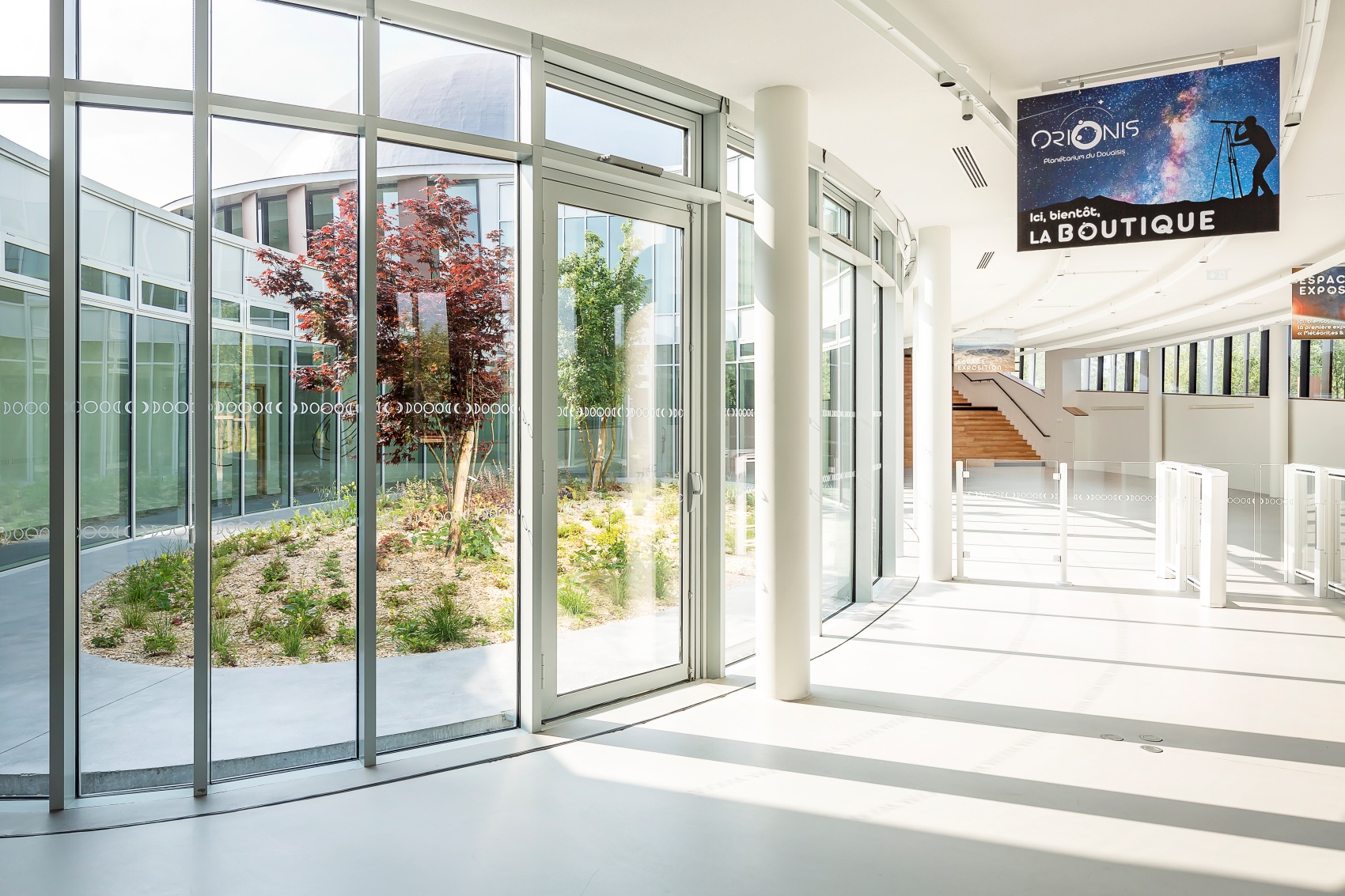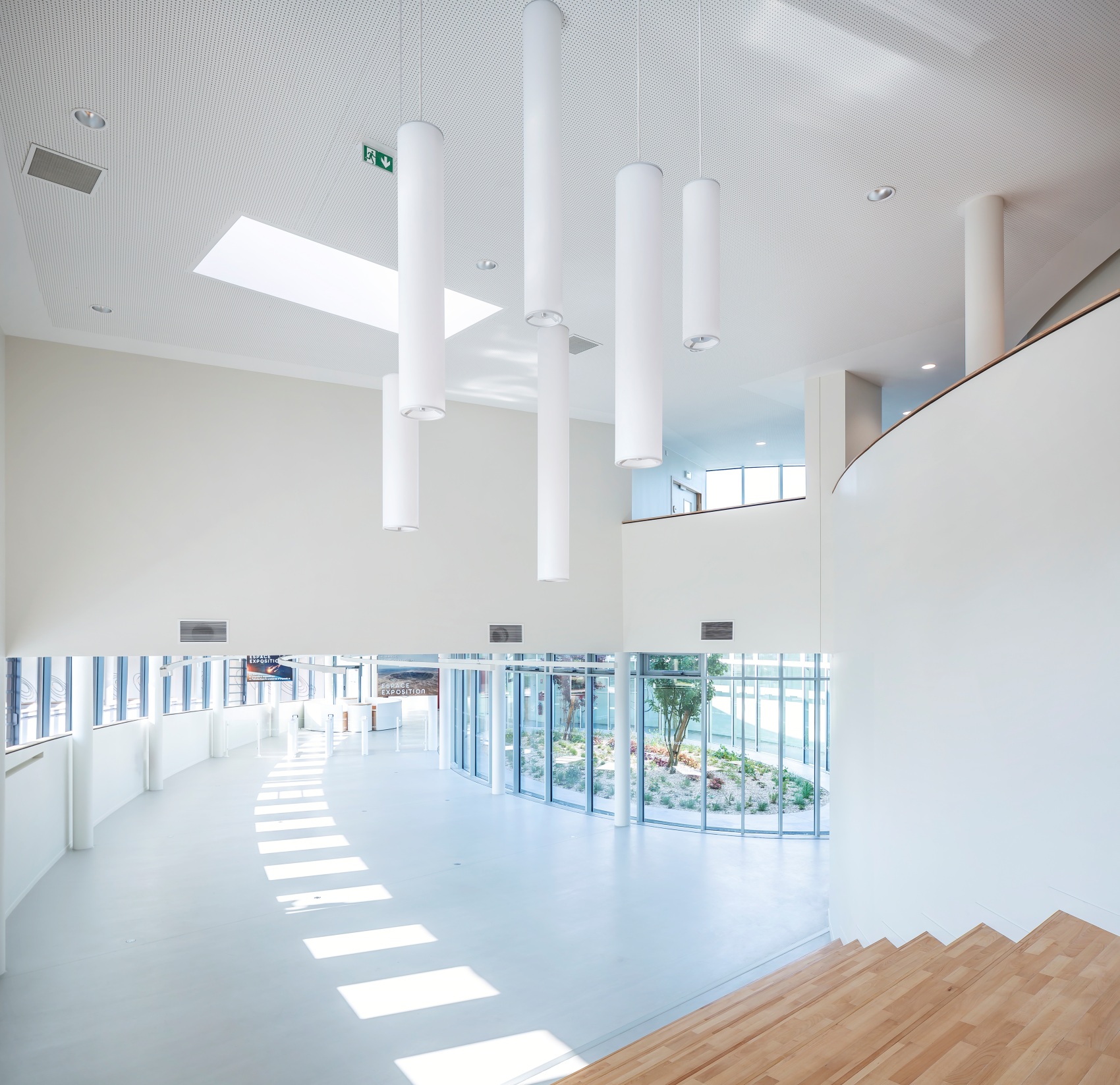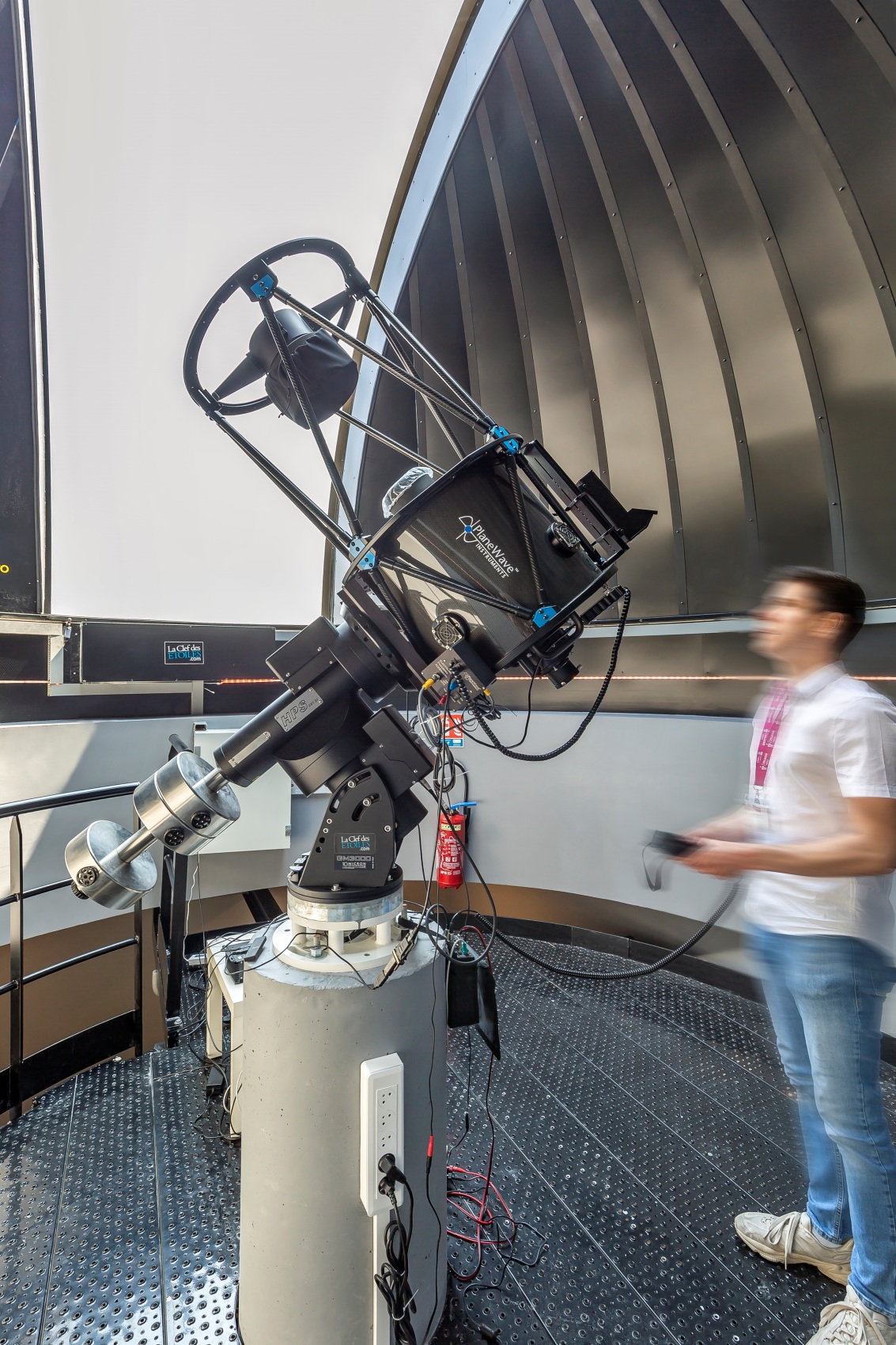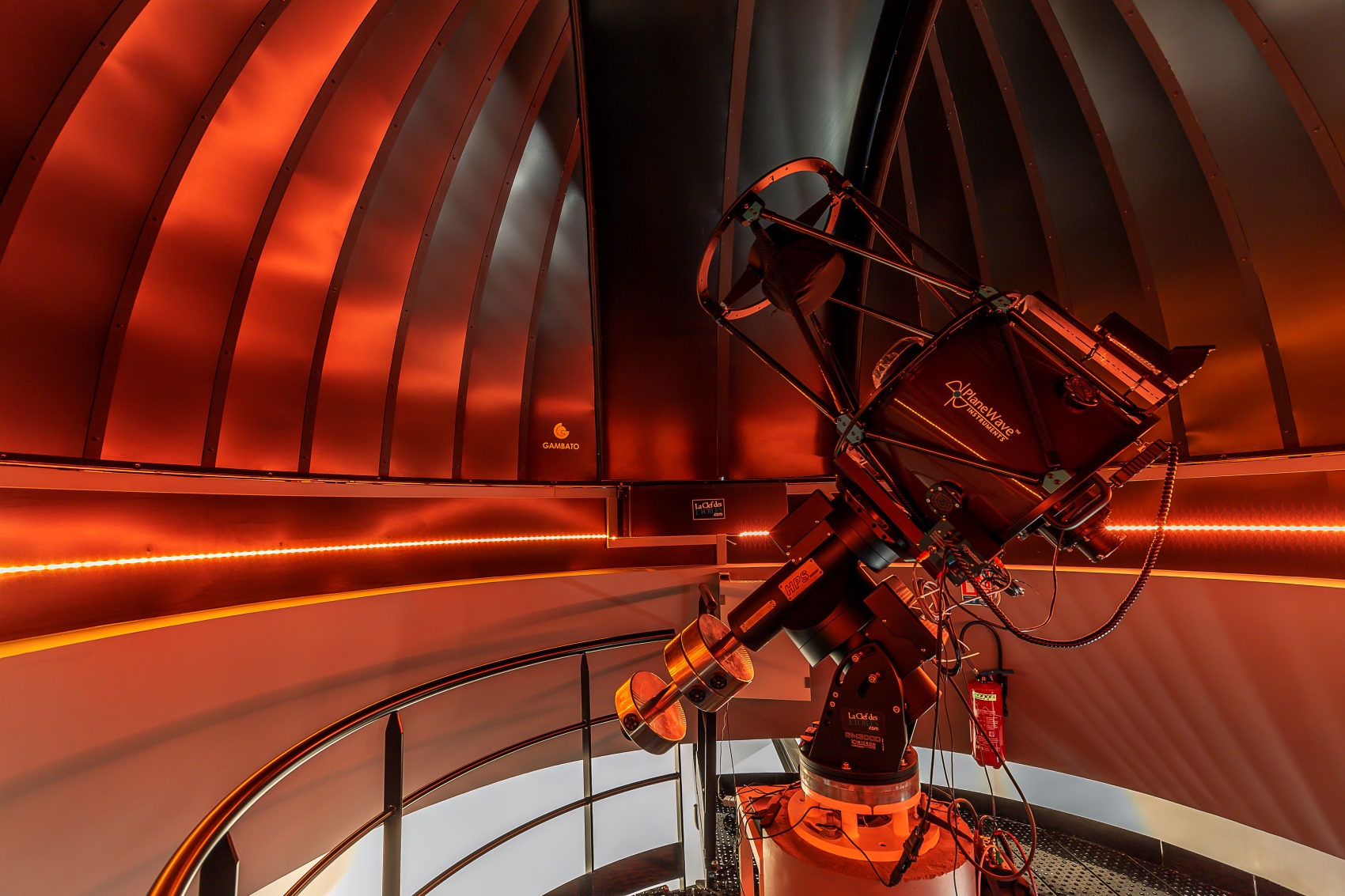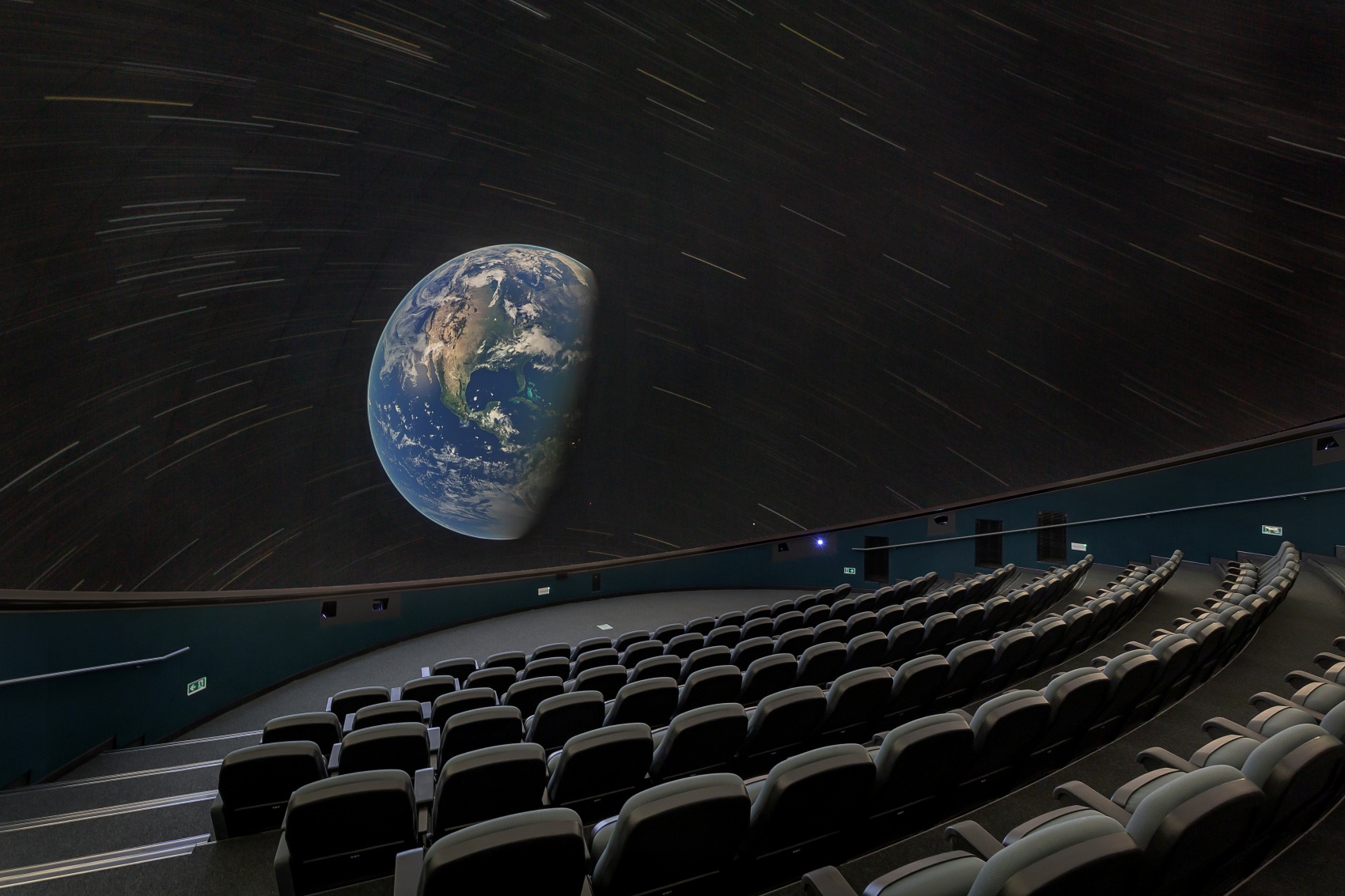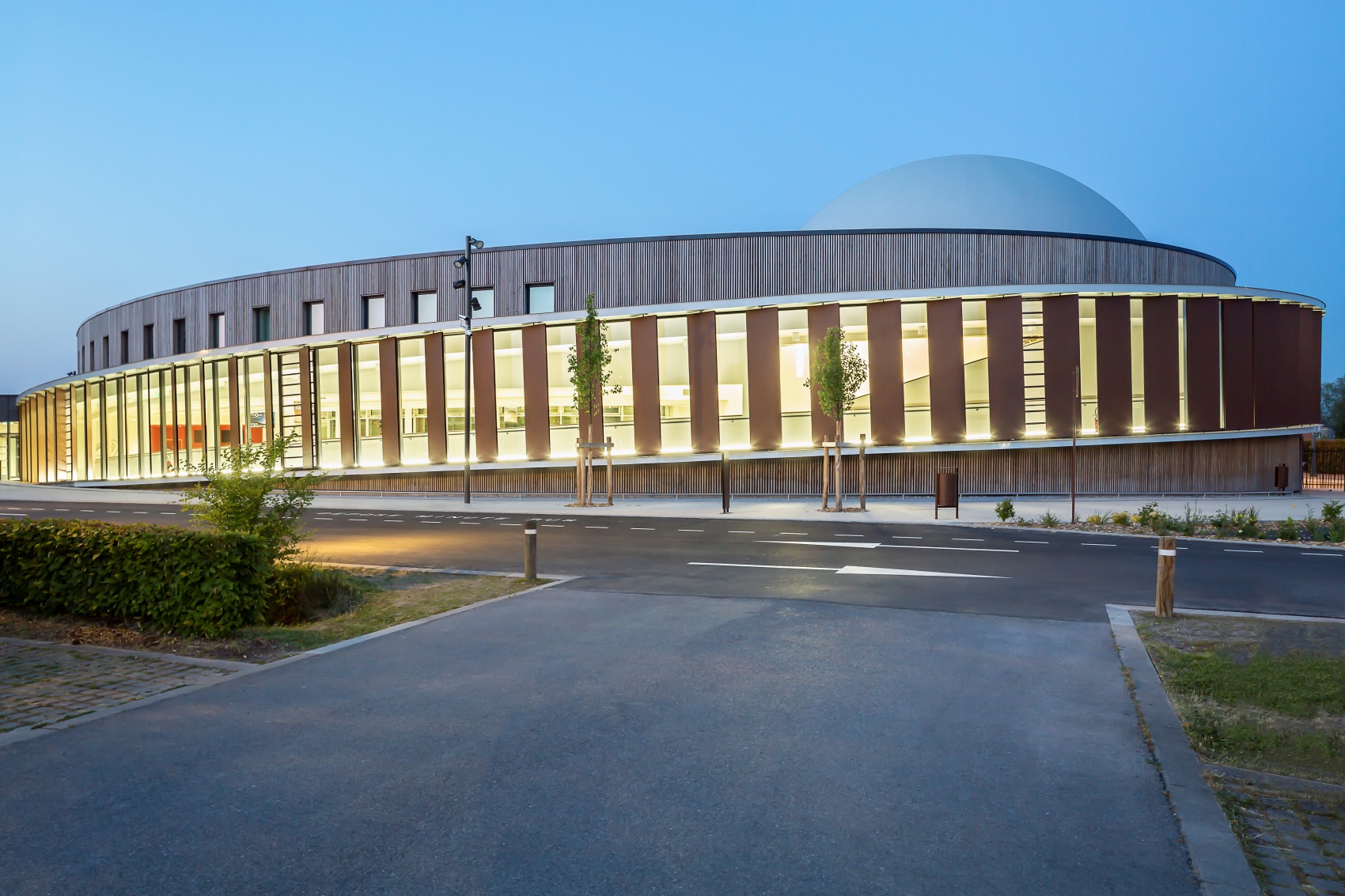The Orionis planetarium and observatory was built in the town of Douai in northern France. The building was designed by architects from the Snøhetta studio, who wanted to fit in with the modest buildings nearby
The planetarium was built close to the Scarpe River, the Arkéos archaeological museum and residential buildings. The new building aims to harmoniously combine these elements to create an attractive venue for visitors. The building is designed on an elliptical plan, is devoid of curves and is topped by two domes. The latter house a projection room and an observatory
We wanted to offer the residents of Douai an unusual meeting place. The architectural and urban design concept of our project draws inspiration from the elliptical movement of the stars. Continuity, fluidity and eternity are concepts we have reinterpreted in the design, not only in terms of shape, but also in terms of the experience visitors will have in the planetarium, engaging all the senses, says Kjetil Trædal Thorsen, co-founder of Snøhetta
The concept of ‘continuous movement’ was the starting point for the entire project and influenced every element – from the reception area, the exhibition spaces through the amphitheatre and the building’s domes. The exterior walls are adorned by a gently sloping ramp that surrounds the planetarium
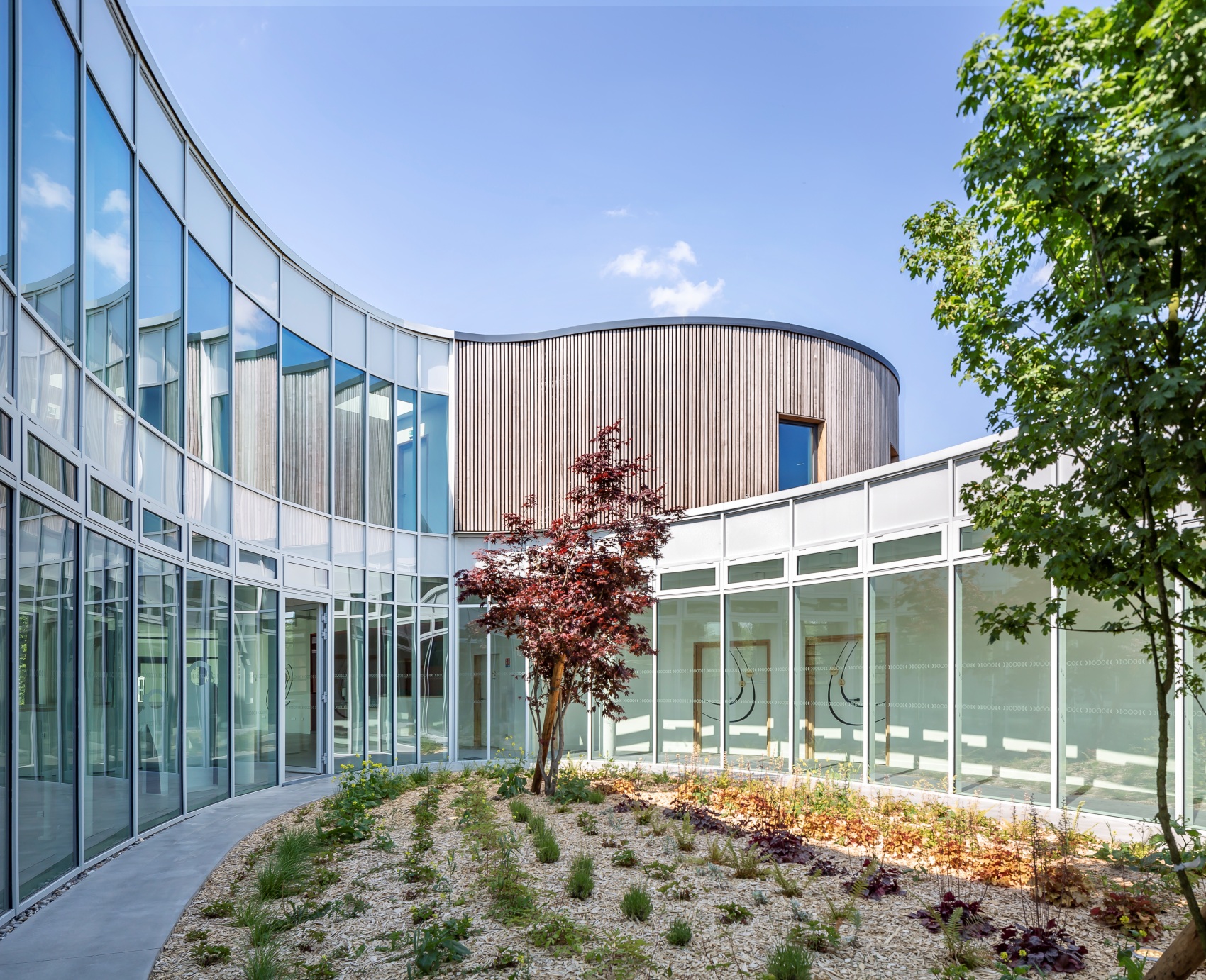
The use of plants was of great importance in the design. A garden with a walking path was built, new tree and shrub plantings were made, and grass is growing on the roof. Further plants can be seen when entering the building. The planted and glazed patio is visible from all rooms
A nod to nature can be seen in the materials and technology used. The building was constructed using poplar wood, and the interior is heated with the help of geothermal energy. Further elements include sunshades and a green roof to ensure an optimal temperature inside. Throughout the construction, efforts were made to use materials that were sourced locally which contributes to a lower carbon footprint
photo: Jad Sylla
source: Snøhetta
Also read: Curiosities | Modernism| France| Museum| whiteMAD on Instagram

